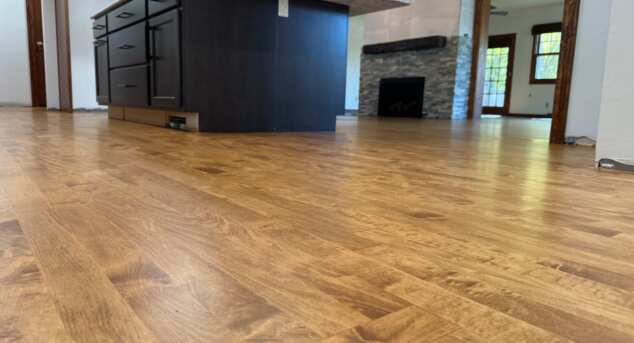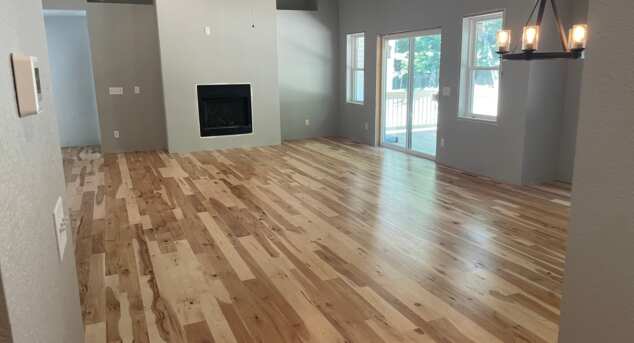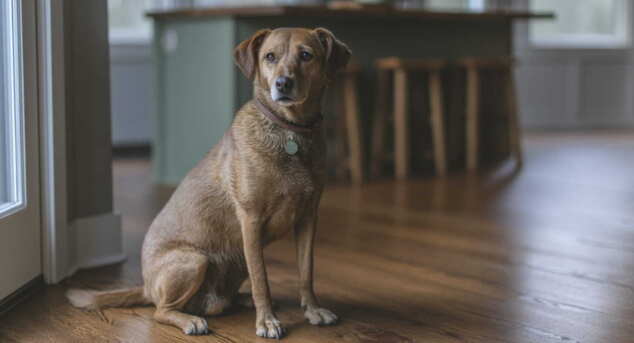All About Bamboo Flooring
Posted by Aaron Schaalma
All About Bamboo Flooring
Pop quiz: How many bamboo items do you have in your home? Maybe a cutting board, Yoga mat? Woven wood window treatments? If you’re a panda, you may have a belly full of it.
In all seriousness, bamboo is an incredible material that comes from a pretty incredible plant.
In fact, let’s talk about that plant for a minute:
Not tree-ly
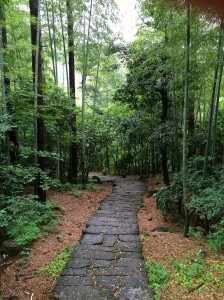
Image credit to JesseW900 | WikiCommons
It may surprise you to know that bamboo is not a tree! You may have seen forests of bamboo, like the one pictured, growing up to 100 feet in height, but bamboo is actually a grass.
As the tallest member of the Poaceae family of grasses, and largest grass in general, you wouldn’t be the first person to make the mistake of referring to these towering plants as trees.
Bamboo not only grows large, but it grows fast. Under optimal conditions, a single stalk of bamboo can grow up to three feet in a single day.
So when your “friend” Danny tells you he’d rather watch grass grow than attend your Chopped marathon, give him the benefit of the doubt and assume he’s talking about bamboo. You may want to cancel your plans and join him, in fact!
Most bamboo that is used in the United States is grown in China. Not only is the hard stalk useful for building and the flowers edible, but different parts of a bamboo plant are used in a host of traditional Chinese medicine practices.

It really is an incredible plant.
Why bamboo flooring?

Because bamboo is a fast-growing grass, you may be inclined to think of it as a soft wood with little durability. You probably know we’re about to say this, but you’d be wrong.
Bamboo is one of the hardest woods you can choose for your floor, making it ideal for a home with pets, children or indoor roller derby practice. Just how hard is it? Well this is how it compares to other popular hardwood flooring choices on the Janka hardness test:
Black Walnut - 1010 lbf
English Oak - 1120 lbf
Red Oak - 1290 lbf
White Oak - 1360 lbf
Live Oak - 2680 lbf
Strand-Woven Bamboo - 3000lbf
Bamboo isn’t to hardwood what tofu is to pork. It’s seriously hard wood! Even popular options like oak don’t compare to its tensile strength and durability. This added strength also makes it less likely to warp if exposed to moisture or extreme temperatures.
Additionally, it’s composition allows it to be built into a variety of plank lengths and stained to match any existing hardwood tone. It’s like the alien shapeshifter of the hardwood flooring world.
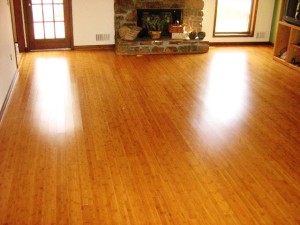
So it’s hard and versatile, but a wood like that must be incredibly expensive, right? It’s actually about ½ to ⅔ the price of popular hardwood flooring choices, making it about the same price as laminate or luxury vinyl plank flooring.
If you’re the type of person who takes a reusable shopping bag with you on grocery trips, you may be inspired to choose bamboo for its environmental soundness. The average bamboo stalk takes only five years to fully mature compared to hardwood trees like walnut, which take about 50, making bamboo a sustainable choice.
Why not to choose bamboo flooring
Reading up to this point, you may be inclined to believe that we’ve sold out to Big Bamboo. Let us put that thought to rest by saying there are actually some compelling reasons to pass over bamboo as a choice for hardwood flooring.
For starters, bamboo is often treated with urea, a type of formaldehyde. While it won’t have lethal health effects on members of your household, it can reduce indoor air quality slightly to the point of noticeability for elderly household members, or those with asthma.
Second, it’s strong and it’s versatile, but may not be both at the same time. For instance, if you want a darker wood and don’t want to stain bamboo, the color is changed through a heating process which reduces the strength.
Modern practices are helping to curb this, but it could still make opting for a naturally dark hardwood like a Brazilian Ebony a better option.
Finally, while it’s easy to mimic the color and plank width of other hardwoods, bamboo lacks the natural knotting and striping which some homeowners may associate with character. It may be versatile, but that doesn’t mean it’s quite for everyone.

Caption: A traditional hardwood may be a better option if knotting and striping are important factors in your decision.
So should I get bamboo flooring?
Really, it’s up to you! Bamboo is a great option, but it’s just that, one option.
This unique hardwood offers a lot of bang for your buck, but there might be better options out there for you depending on your decor, interior design and personal preference.
As hardwood flooring experts, we’re happy to lend some expertise to your unique situation, and help navigate the “to boo or not to boo” question.
Contact us today to set up a complimentary consultation.
Header image credit to Anathea Utley on Flickr

